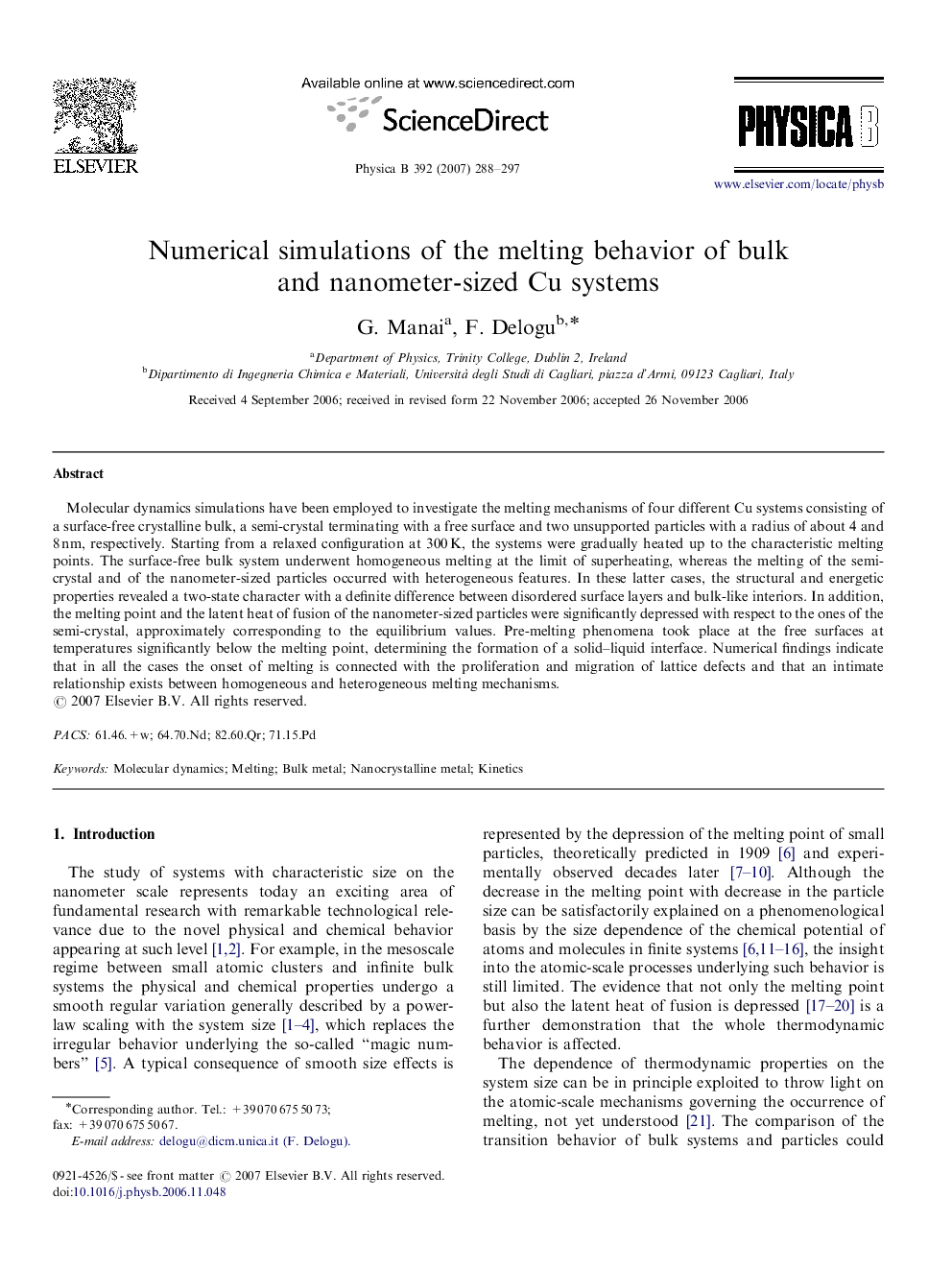| Article ID | Journal | Published Year | Pages | File Type |
|---|---|---|---|---|
| 1816262 | Physica B: Condensed Matter | 2007 | 10 Pages |
Molecular dynamics simulations have been employed to investigate the melting mechanisms of four different Cu systems consisting of a surface-free crystalline bulk, a semi-crystal terminating with a free surface and two unsupported particles with a radius of about 4 and 8 nm, respectively. Starting from a relaxed configuration at 300 K, the systems were gradually heated up to the characteristic melting points. The surface-free bulk system underwent homogeneous melting at the limit of superheating, whereas the melting of the semi-crystal and of the nanometer-sized particles occurred with heterogeneous features. In these latter cases, the structural and energetic properties revealed a two-state character with a definite difference between disordered surface layers and bulk-like interiors. In addition, the melting point and the latent heat of fusion of the nanometer-sized particles were significantly depressed with respect to the ones of the semi-crystal, approximately corresponding to the equilibrium values. Pre-melting phenomena took place at the free surfaces at temperatures significantly below the melting point, determining the formation of a solid–liquid interface. Numerical findings indicate that in all the cases the onset of melting is connected with the proliferation and migration of lattice defects and that an intimate relationship exists between homogeneous and heterogeneous melting mechanisms.
